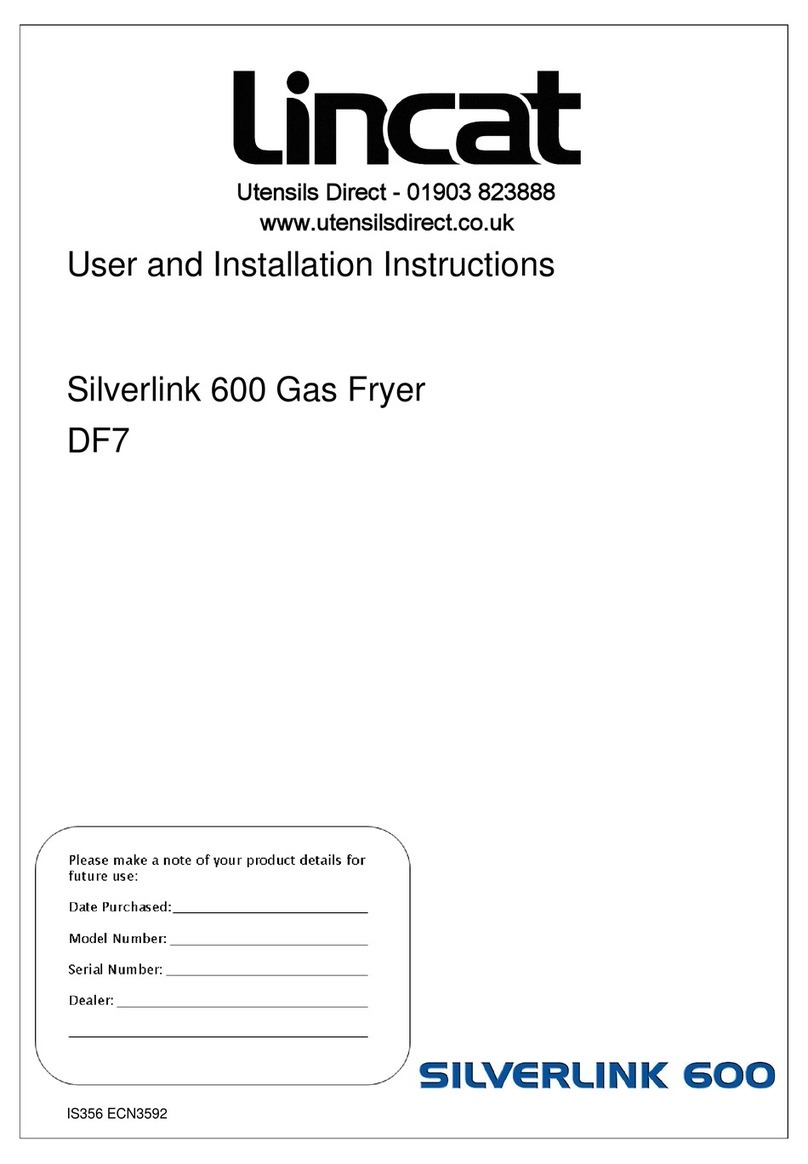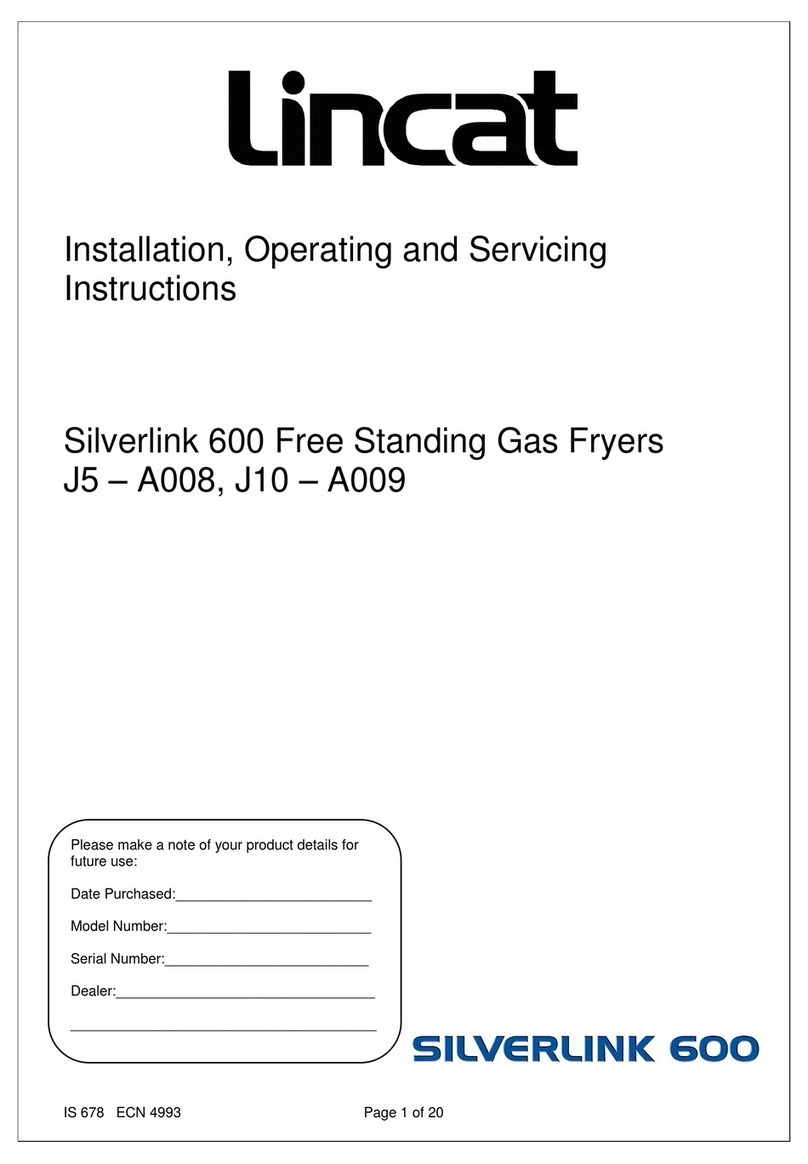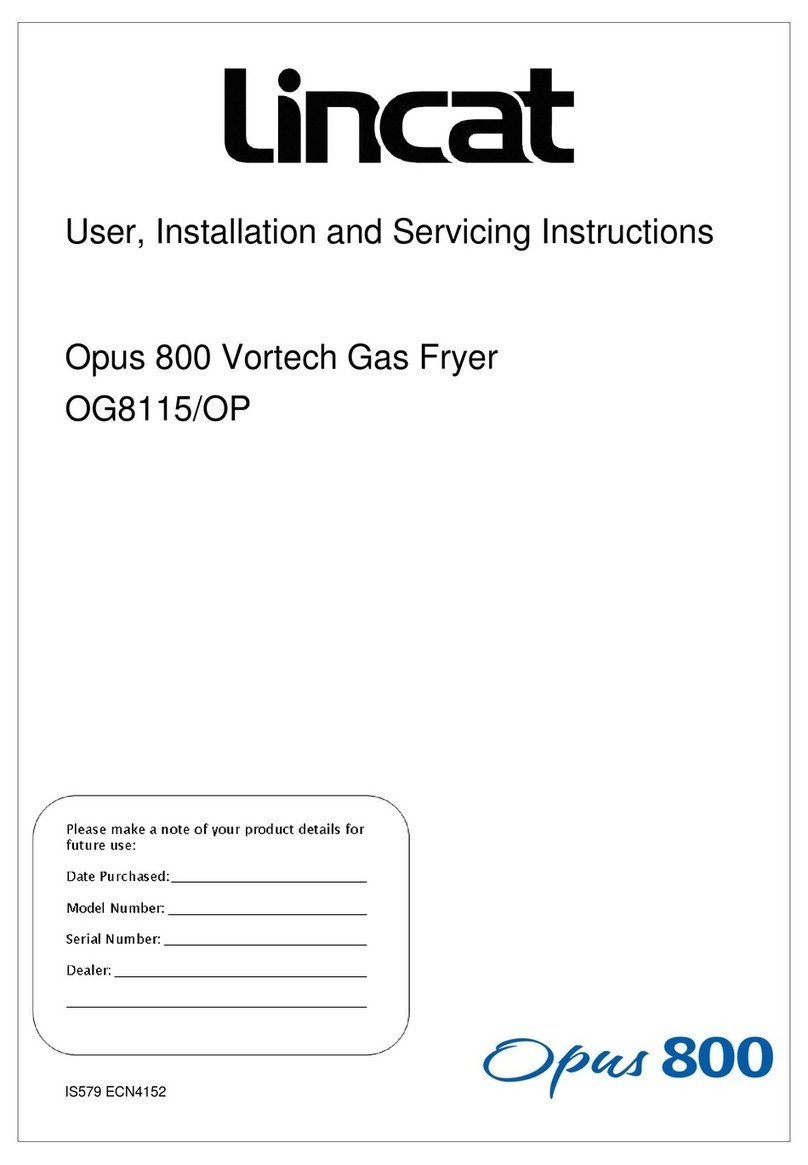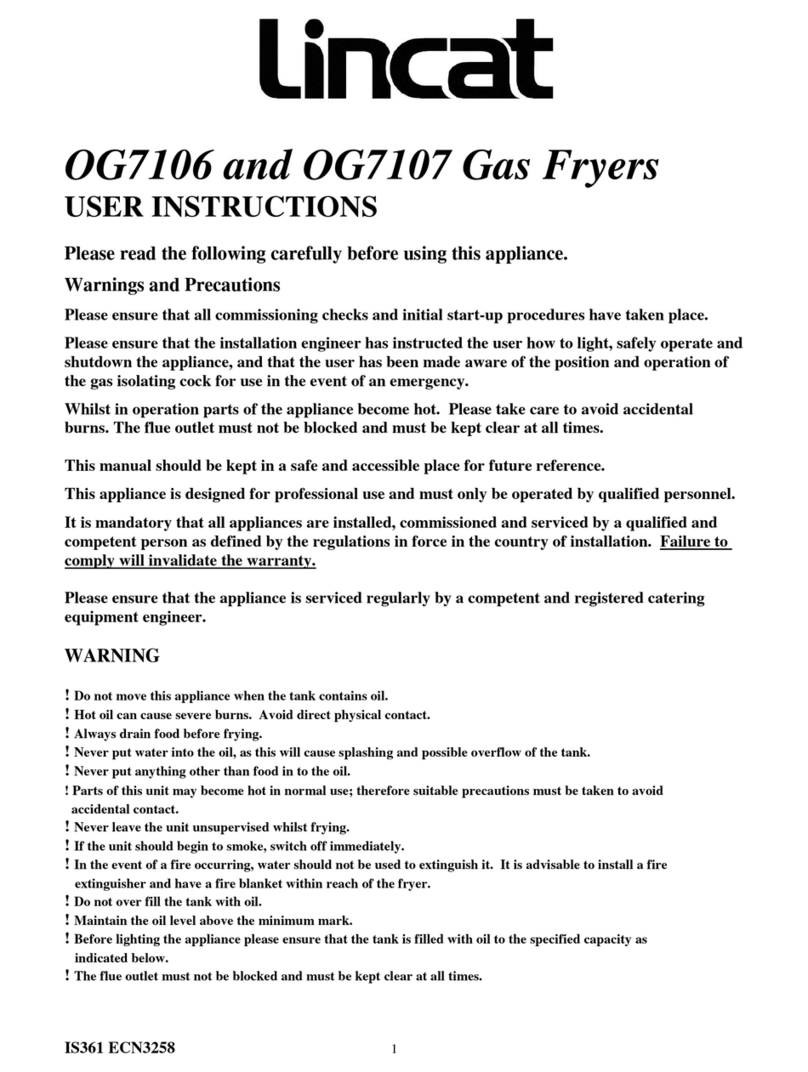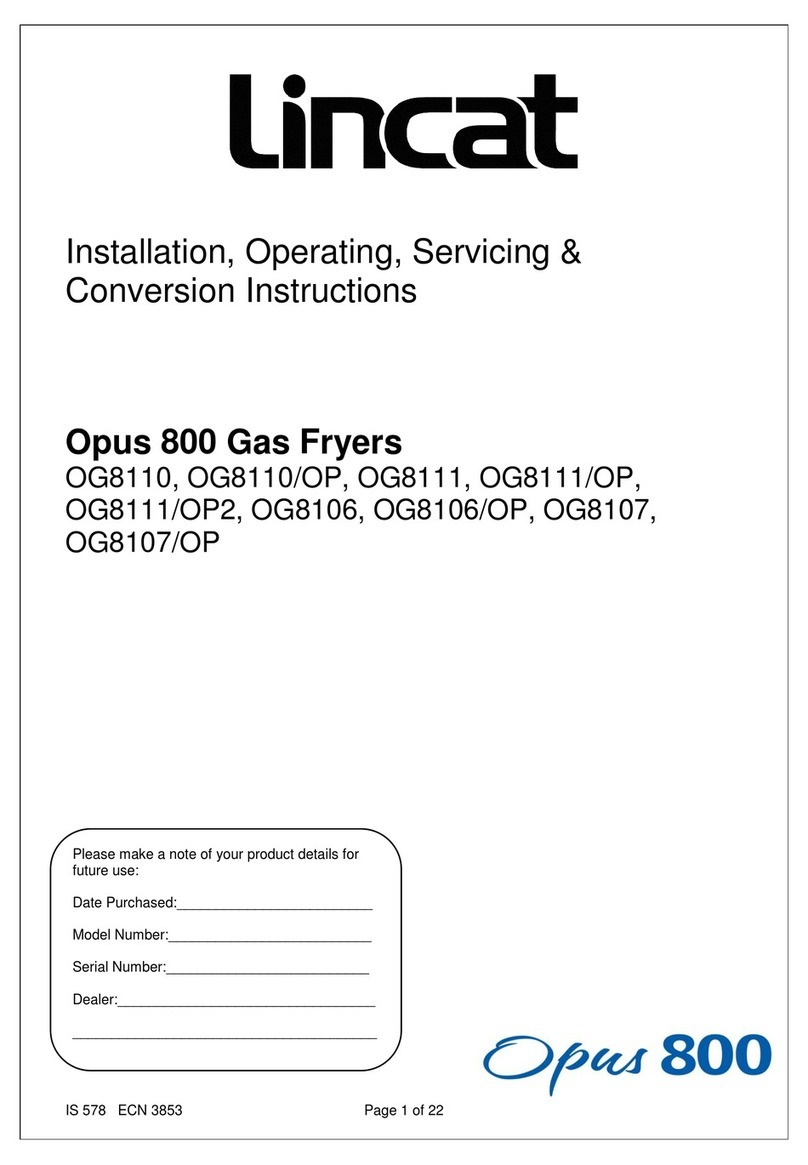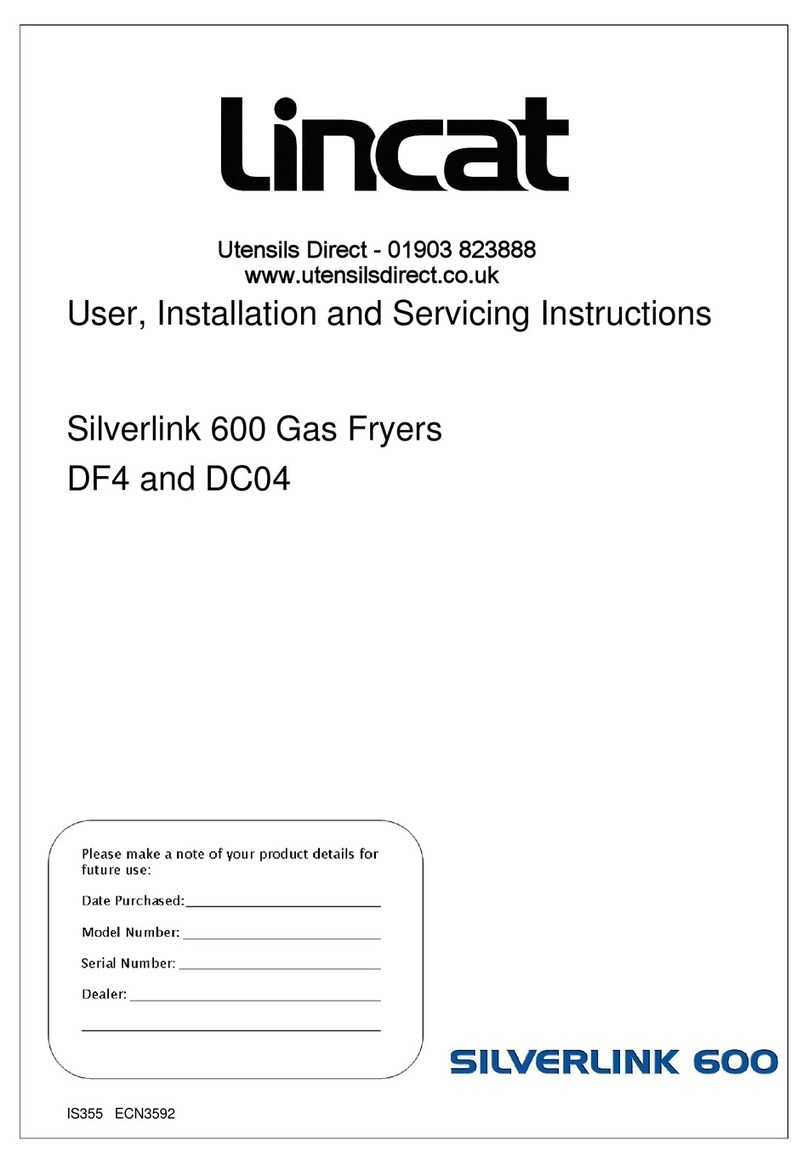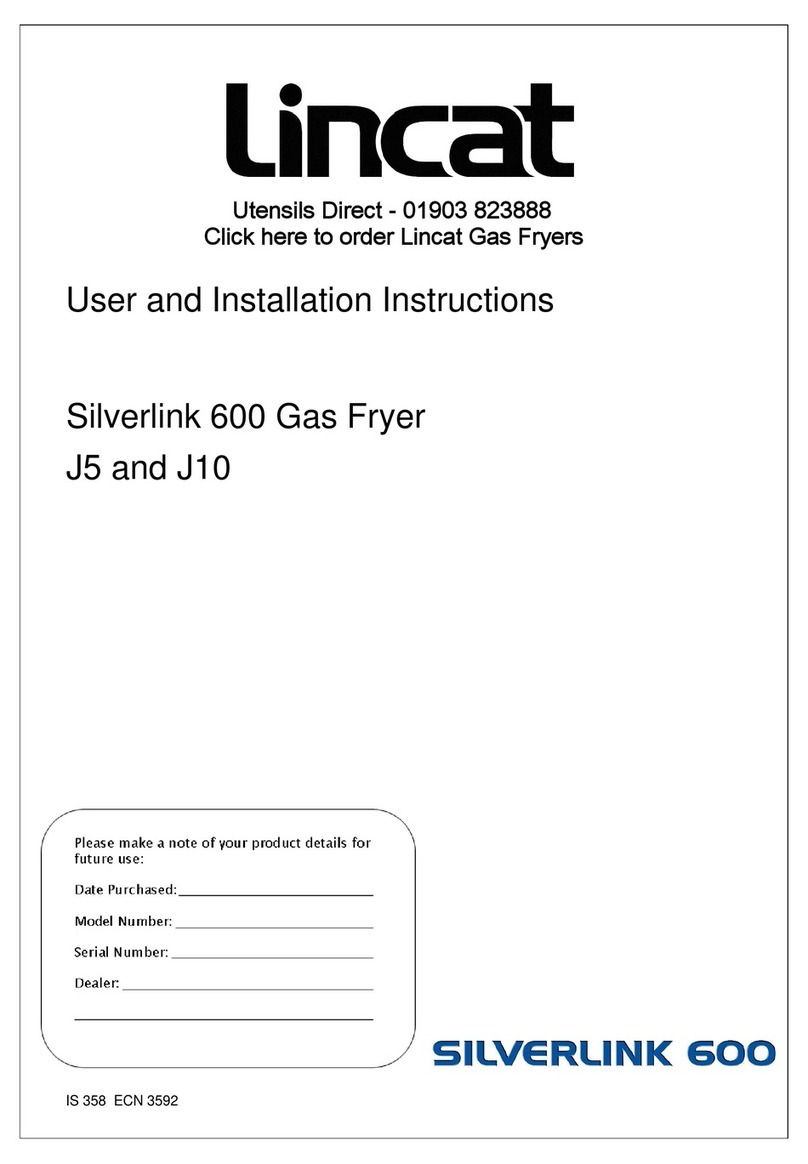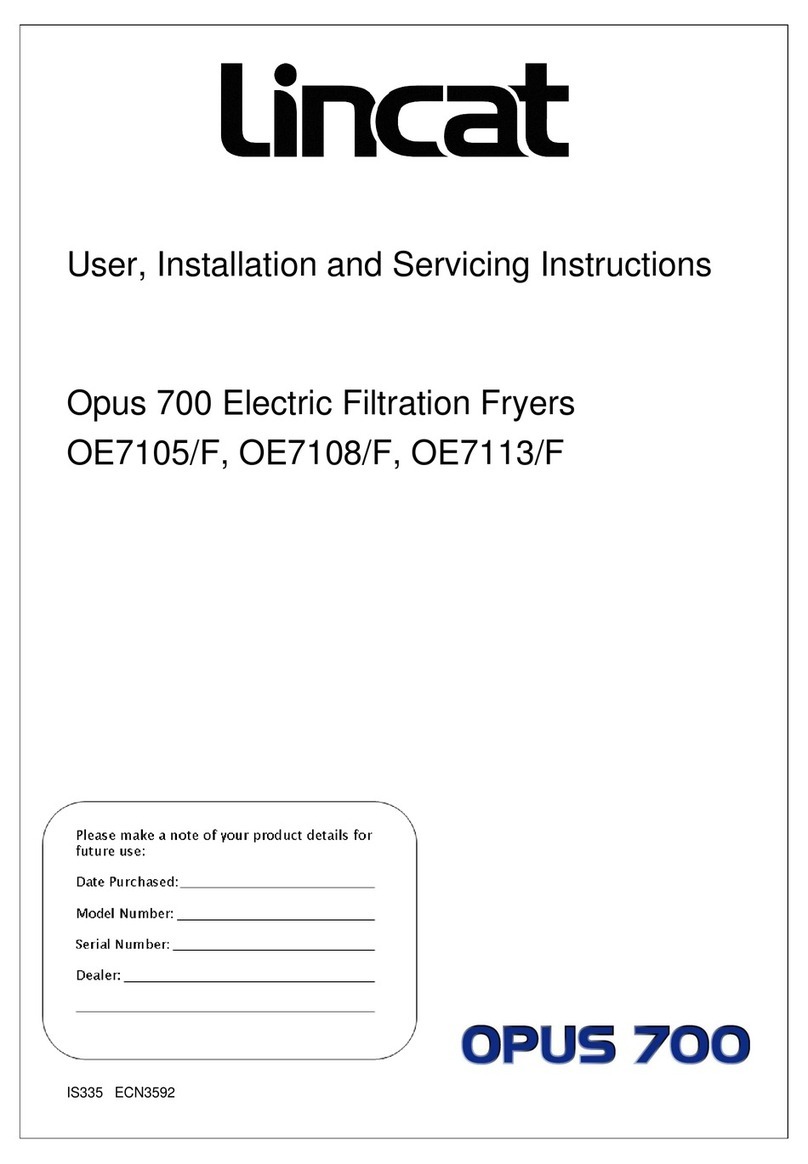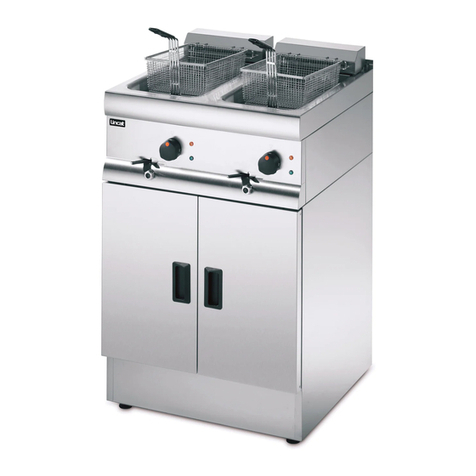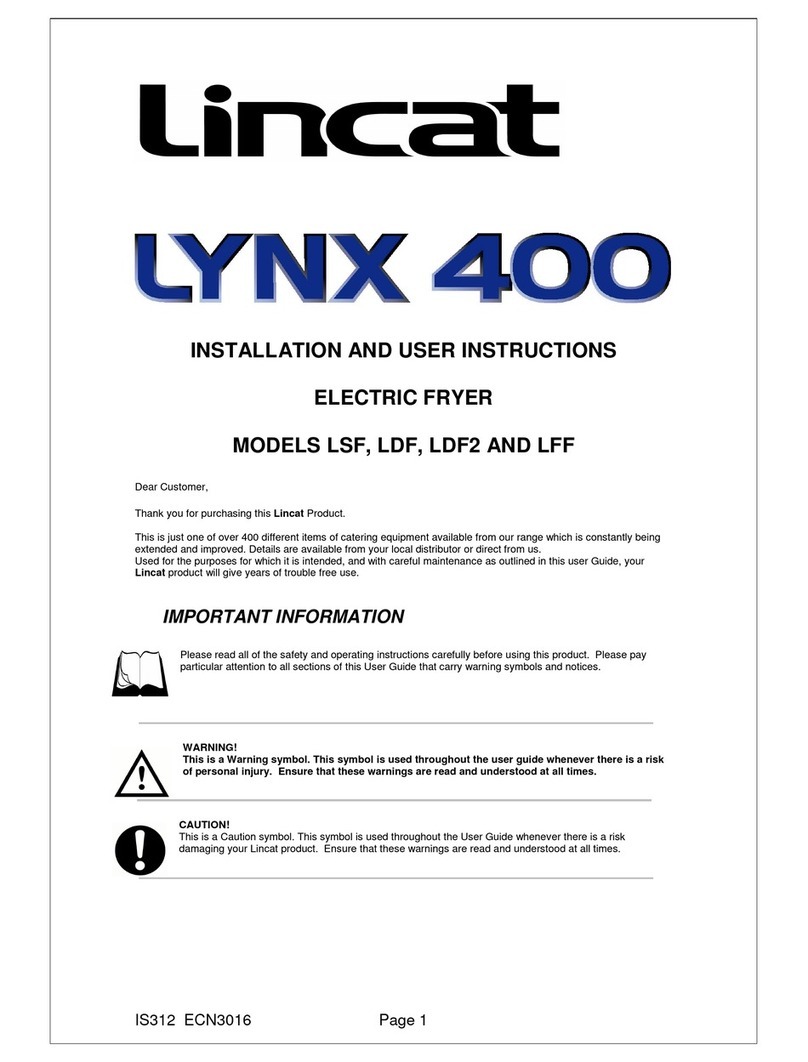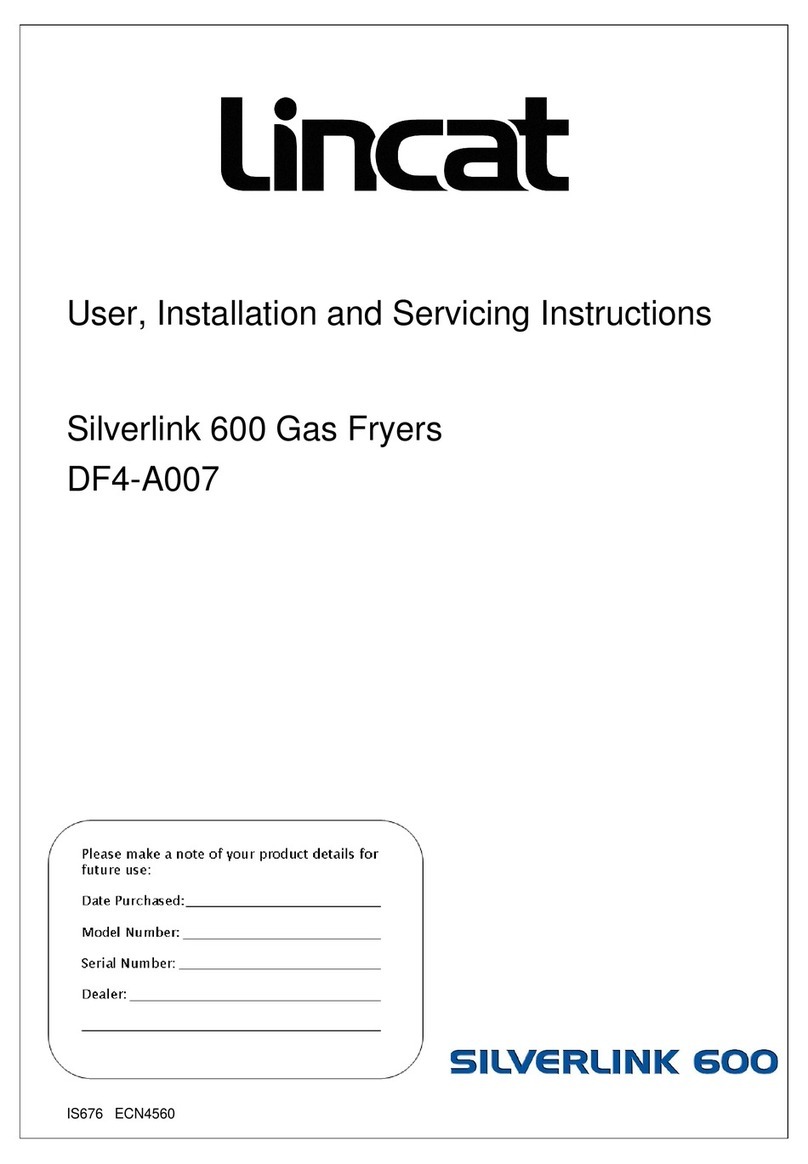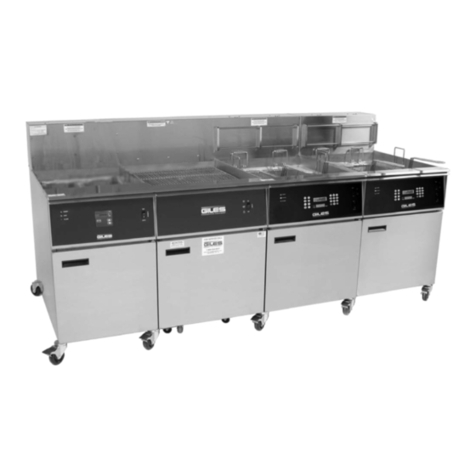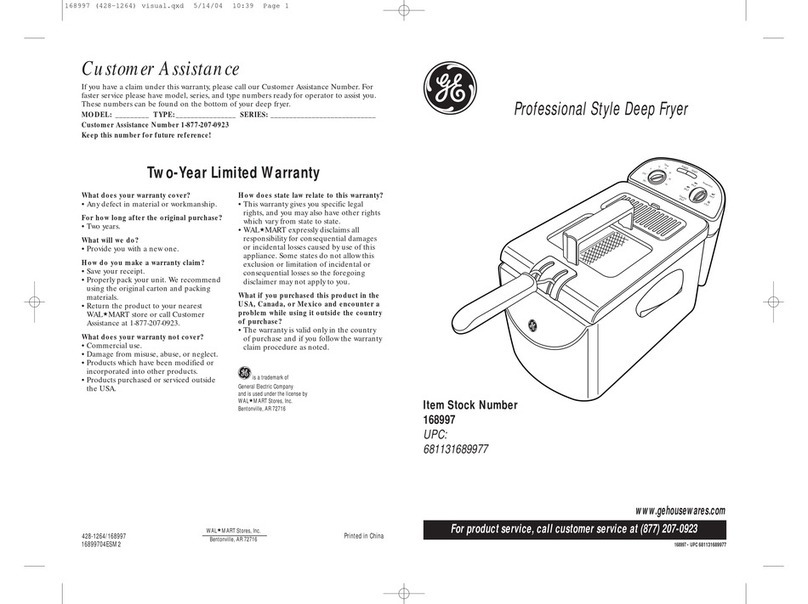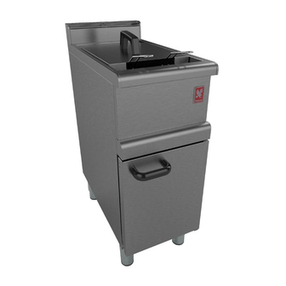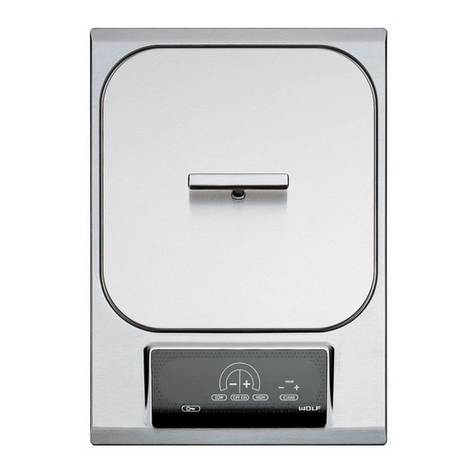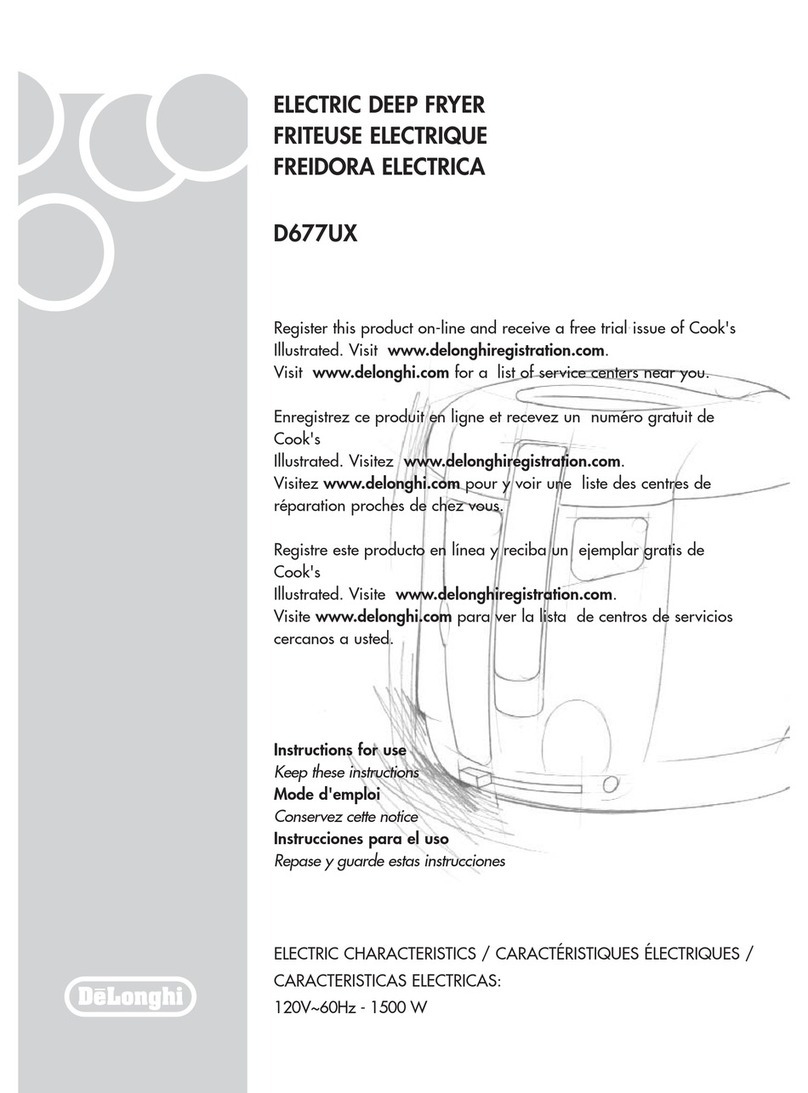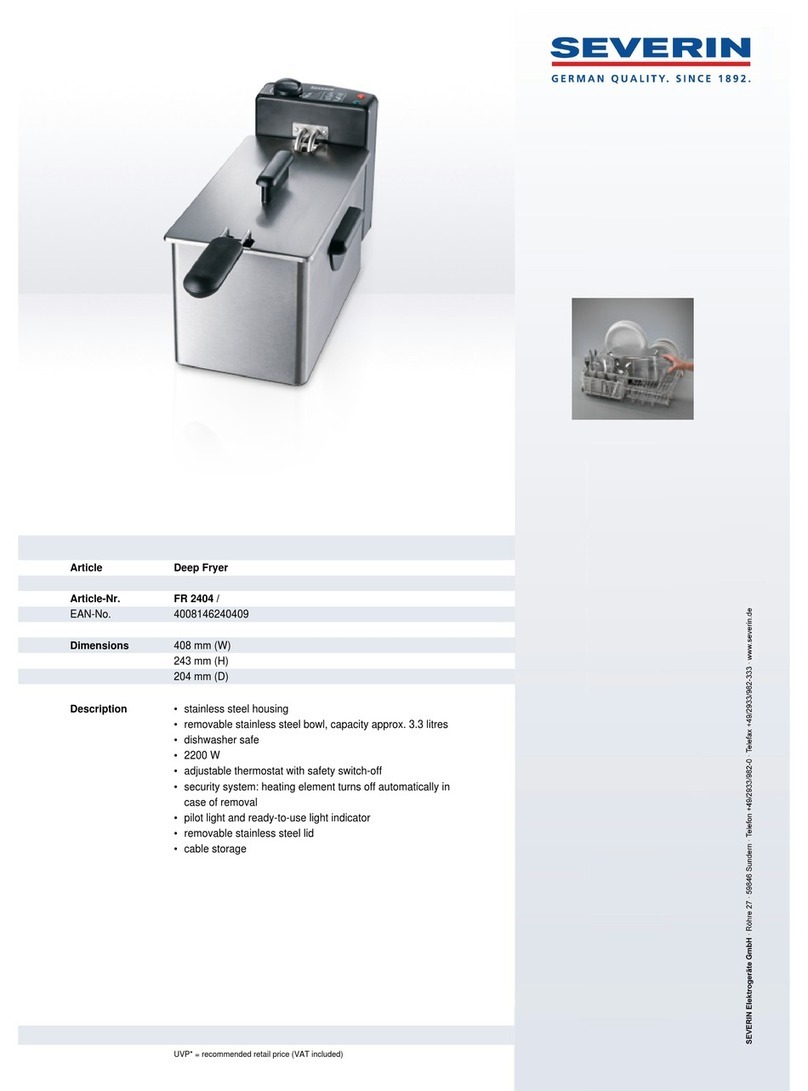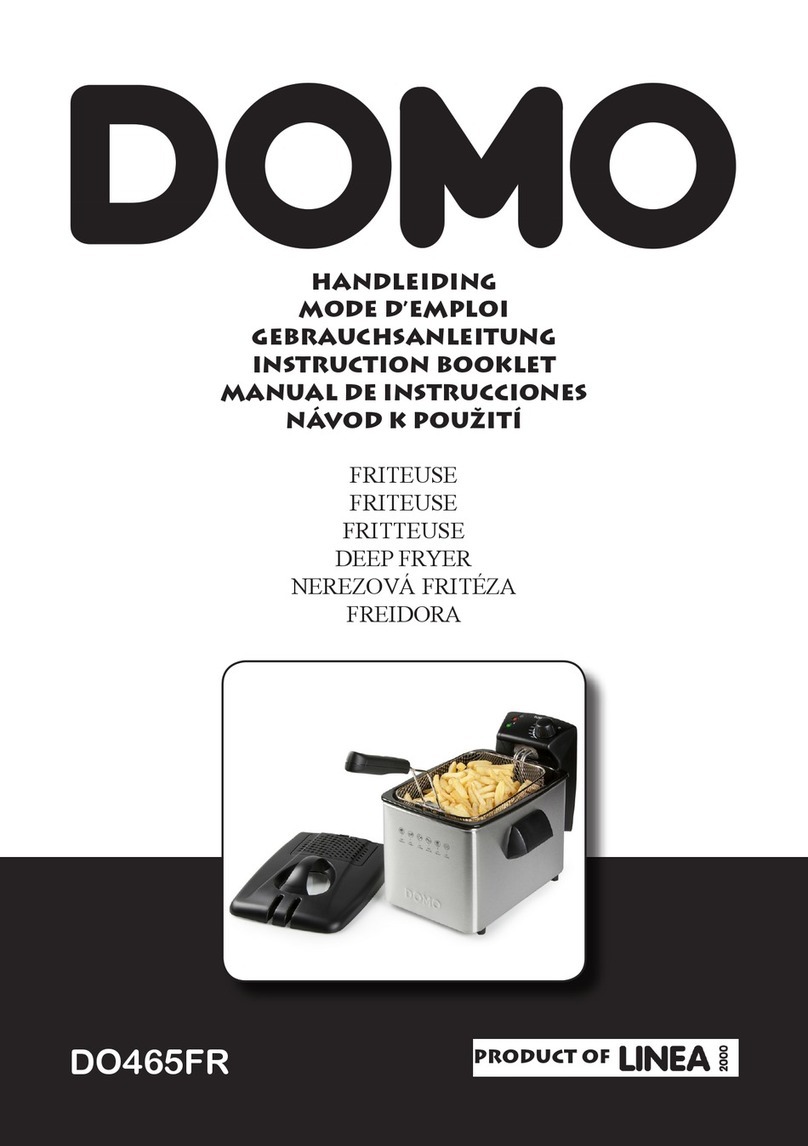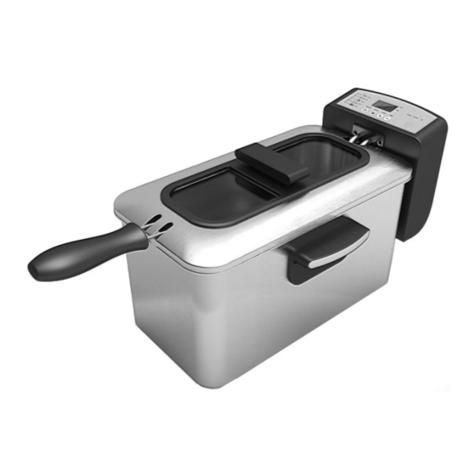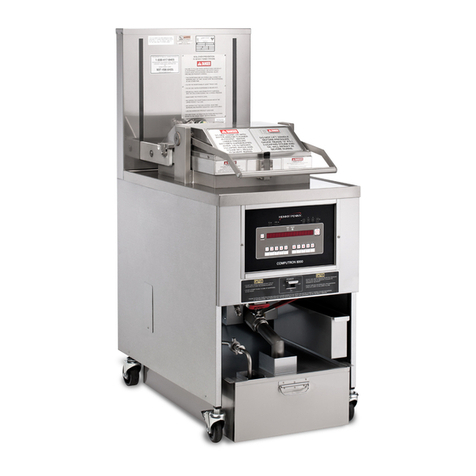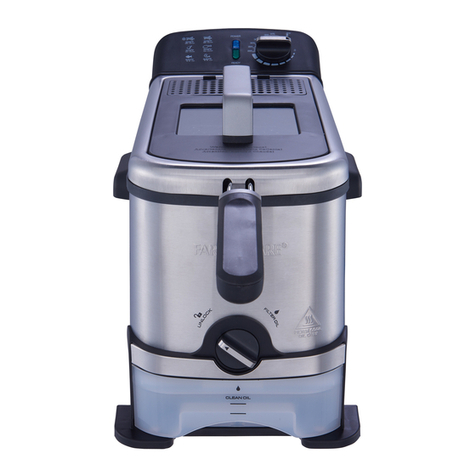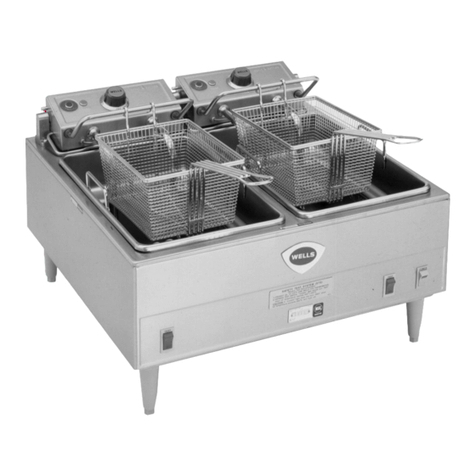
IS676 ECN4560
When the pilot is lit, release the pilot control knob and continue to turn fully anti-
clockwise to the ON position (Fig 4, C).
If the pilot flame fails to remain lit, return the pilot control knob to the off position and
repeat the process allowing a short period of time for the control to reset.
To operate the main burner, turn the thermostat control knob (Fig 3, 1) to the
required temperature setting.
OFF
PILOT
ON
OFF
PILOT
ON
OFF
PILOT
ON
AB C
Fig 4.
Standby
Once the pilot is lit, the appliance may be left on standby by leaving the pilot control
knob in the pilot ignition position. (Fig 4, B). When in this position the appliance
cannot be operated from the thermostat control knob. To re ignite the main burners
turn the pilot control knob anti-clockwise to the burner position, (Fig 4, C), and
operate the control thermostat as normal.
Safety cut-out
Should the safety thermostat operate during use, the appliance will shut down.
Allow the oil to cool before resetting the thermostat by depressing the red button
(Fig 3 8).
Shut down
When the appliance is not required, turn the thermostat fully anti-clockwise, which
will shut down the main burner but leave the pilot lit ready for when the appliance is
next required.
To turn the unit off completely, turn the thermostat fully anti-clockwise and the pilot
knob fully clockwise.
Drainage
Always allow the oil to cool to a maximum 55 oC before draining.
Remove the blanking nut from the front of the unit (Fig 3, 5). Fit the drain pipe,
which has a stowage clip under the lid, and place a suitable receptacle under the
pipe outlet. Lift the safety catch (Fig 3, 7) and operate the tap by moving the handle
(Fig 3, 6) to the right to drain. Remove the pipe and fit into its storage position in the
lid. Replace the blanking nut and close the tap before refilling the tank.
Take care when draining the oil that the drain bucket is not filled so full that it is
difficult to handle.
